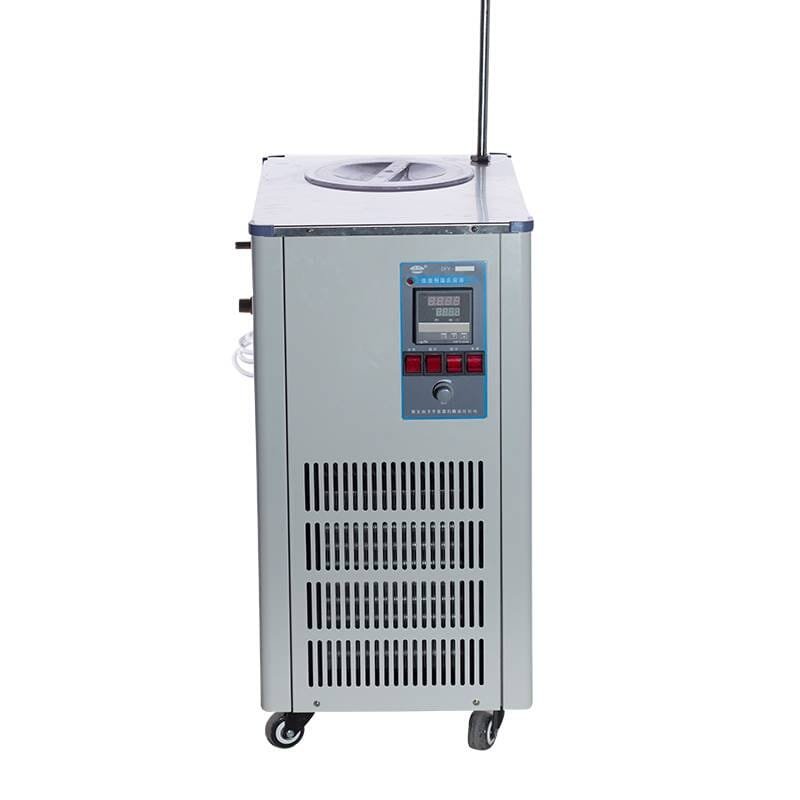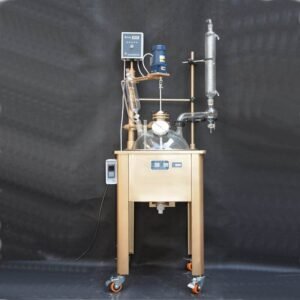The Essential Role of a Low-Temperature Cooling System in Scientific Research
Maintaining precise thermal control is crucial for many laboratory and industrial applications. A low-temperature cooling system ensures stable, controlled cooling conditions that are essential for experiments, chemical reactions, and industrial processes. In this article, we will explore the importance of a low-temperature cooling system, its advantages, and its various applications in scientific and industrial settings.

What is a Low-Temperature Cooling System?
A low-temperature cooling system is a specialized apparatus designed to provide accurate and consistent cooling for temperature-sensitive applications. It employs advanced refrigeration technology to achieve and maintain low temperatures, ensuring optimal conditions for research and industrial processes. These systems are widely used in chemical synthesis, biological research, pharmaceutical development, and material testing.
Advantages of Using a Low-Temperature Cooling System
1. Precise Temperature Control
The most significant advantage of a low-temperature cooling system is its ability to maintain stable and precise temperatures. This is crucial for laboratory experiments where even minor temperature fluctuations can affect results. By providing controlled cooling, the system ensures accurate and repeatable experimental conditions.
2. Improved Experiment Reproducibility
In scientific research, reproducibility is key to obtaining reliable data. A low-temperature cooling system ensures that experimental conditions remain consistent, allowing researchers to replicate their studies with confidence. This is particularly essential in pharmaceutical and biochemical research, where temperature-dependent reactions must be precisely managed.
3. Enhanced Equipment Performance
Many laboratory instruments, including rotary evaporators, analytical instruments, and reaction vessels, require efficient cooling to operate optimally. A low-temperature cooling system helps prevent overheating, ensuring these devices function efficiently while extending their operational lifespan.
4. Energy Efficiency and Cost Savings
Modern low-temperature cooling systems are designed to be energy-efficient, reducing operational costs while maintaining high performance. These systems incorporate advanced insulation and refrigeration technologies that minimize energy consumption, making them an economical choice for laboratories and industrial facilities.
Applications of Low-Temperature Cooling Systems
1. Chemical and Pharmaceutical Research
In chemical and pharmaceutical industries, many reactions require precise temperature control to maintain stability and reaction efficiency. A low-temperature cooling system plays a vital role in maintaining these conditions, ensuring the safety and success of the reaction process.
2. Biotechnology and Life Sciences
Biological samples, enzymes, and reagents often need to be stored and processed at specific low temperatures to preserve their functionality. A low-temperature cooling system helps scientists maintain optimal conditions for molecular biology, protein crystallization, and other biochemical applications.
3. Material Testing and Quality Control
In industries such as aerospace, automotive, and materials science, materials must be tested under extreme conditions, including low temperatures. A low-temperature cooling system enables accurate thermal stress testing, ensuring materials meet stringent quality and safety standards.
4. Industrial Process Cooling
Beyond laboratory applications, low-temperature cooling systems are also essential in industrial settings, such as food processing, plastics manufacturing, and semiconductor production. These systems help maintain the desired temperatures required for production efficiency and product quality.
Choosing the Right Low-Temperature Cooling System
When selecting a low-temperature cooling system, several factors must be considered:
- Temperature Range: Ensure the system meets the required temperature specifications for your application.
- Cooling Capacity: The system must provide sufficient cooling power for the intended processes.
- Energy Efficiency: Opt for energy-saving models to reduce operational costs.
- System Compatibility: Ensure the unit is compatible with other laboratory or industrial equipment.
A high-quality option available in the market is the AKFY-20L Cooling Heating and Stirring Reaction Bath from EquilRxnLab. It offers precise temperature control, high efficiency, and reliable performance for a variety of laboratory applications.
Learn More and Connect with EquilRxnLab
To explore more laboratory cooling solutions, visit the full product catalog here: EquilRxnLab Product Catalog.
For inquiries and support, contact EquilRxnLab through their official page: Contact Us.
Follow EquilRxnLab on social media for the latest updates:
📺 YouTube: @equilrxnlab
📷 Instagram: @equilrxnlab
📘 Facebook: @equilrxnlab



